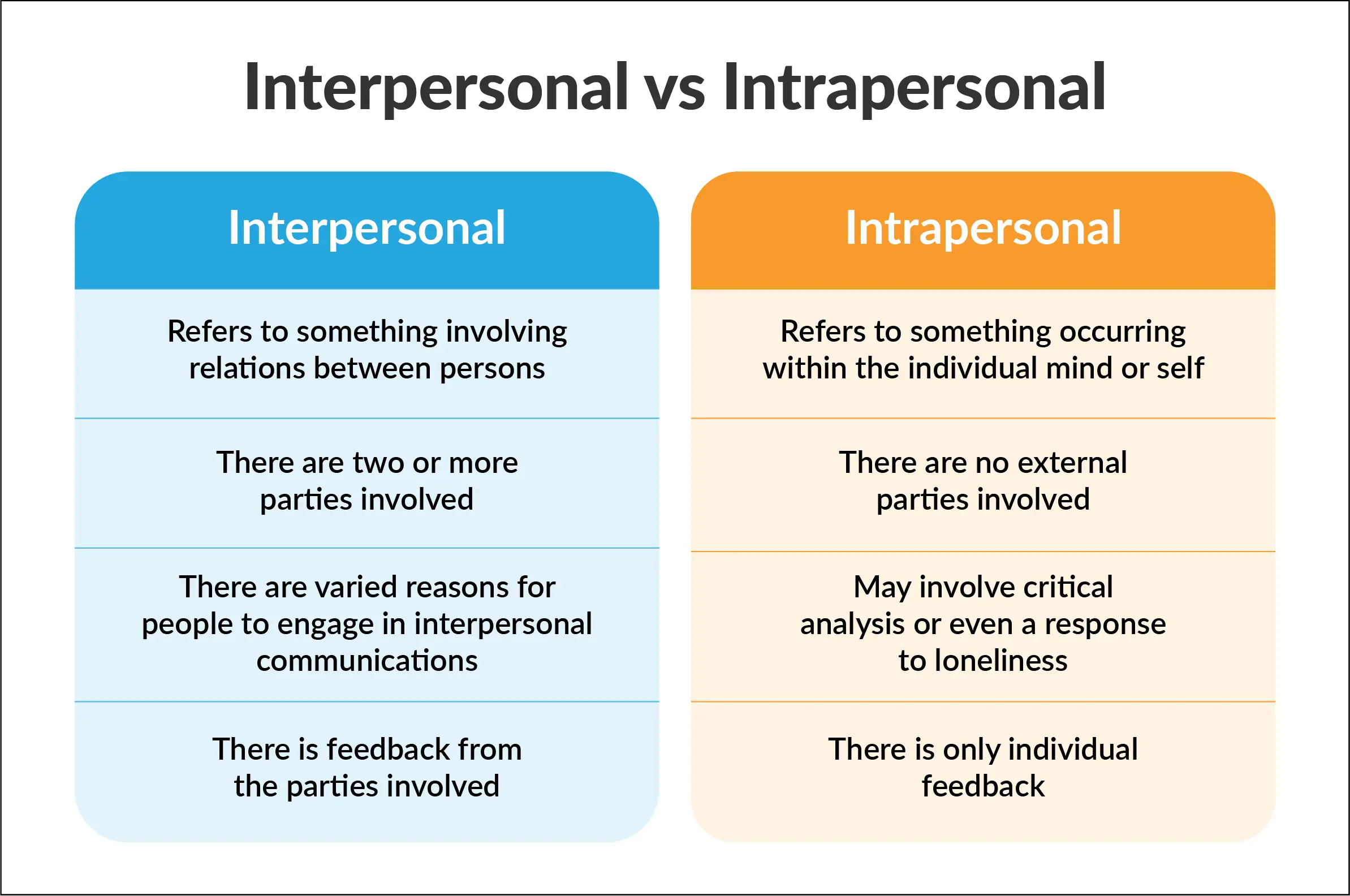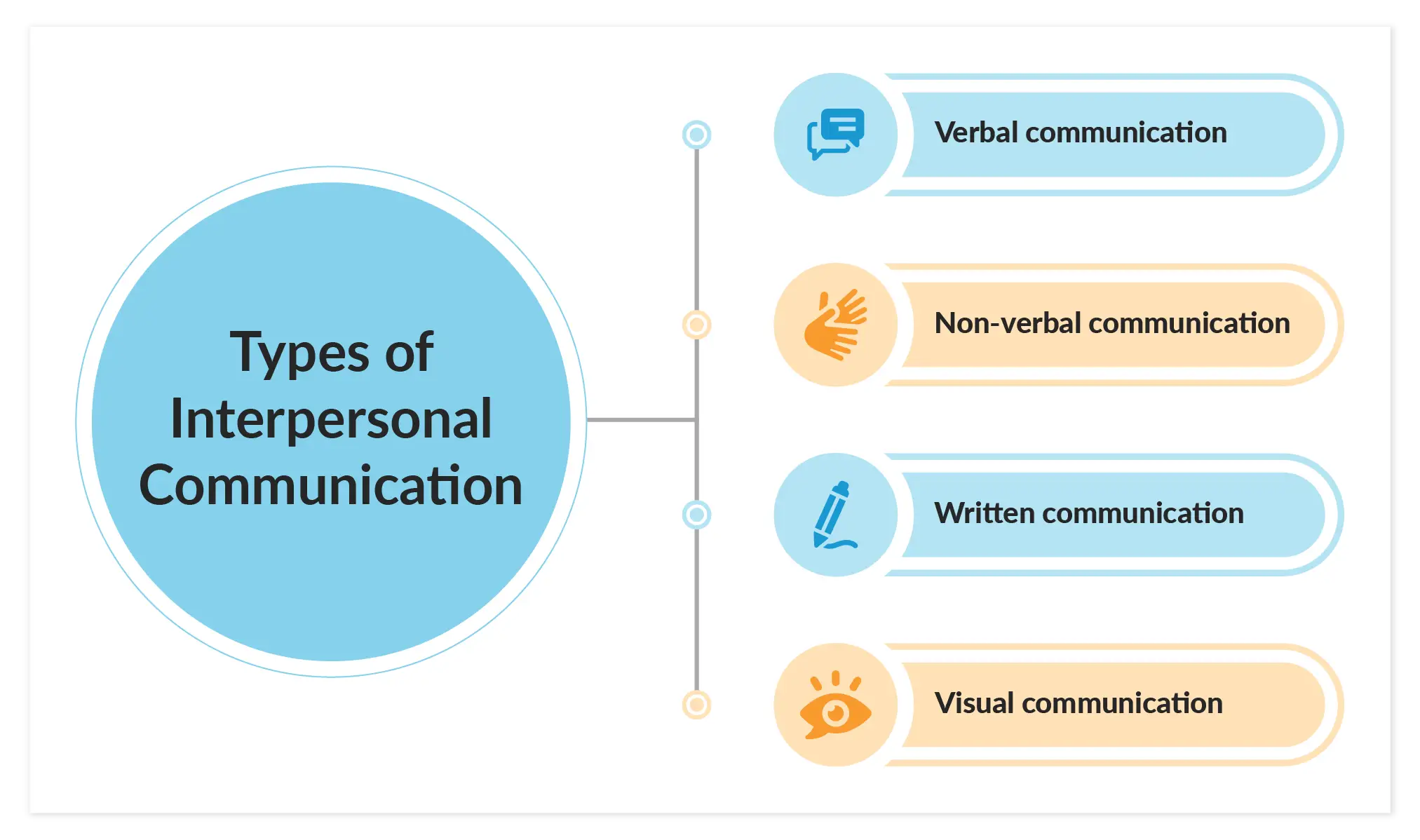10 ways to build interpersonal communication skills at workplace

Mastering the art of interpersonal communication is akin to unlocking a door to deeper connections and enhanced collaboration within any organization. Think of it as the key to building not just professional relationships but also a cohesive and supportive work environment. These skills are integral for leadership, as they enable leaders to inspire and guide their teams effectively.
However, they are equally crucial for every individual within a workplace. When everyone is skilled in interpersonal communication, it fosters an environment where clarity prevails, empathy is a common practice, and overall efficiency is significantly enhanced. Imagine a workplace where misunderstandings are minimized, where colleagues truly understand and support each other, and where collaborative efforts are smooth and productive. This is the power of mastering interpersonal communication.
What is interpersonal communication?
Interpersonal communication encompasses all the nuanced ways in which individuals exchange information, whether through words, gestures, or expressions. It's not just about what you say, but how you say it and how well you listen. This form of communication is the pulse of all business interactions, dictating the quality of relationships and the effectiveness of organizational dynamics.
At its core, interpersonal communication involves much more than merely transmitting information. It’s about building a mutual understanding and facilitating exchanges that go beyond mere words to include emotions and intentions. When you communicate interpersonally, you are not just sharing facts or instructions; you are also sharing a part of yourself, your feelings, and your perspectives. This depth of communication can transform simple interactions into meaningful exchanges, fostering a workplace culture that values connection and collaboration.
The Contrast: Interpersonal vs Intrapersonal
Discussing the differences between interpersonal and intrapersonal communication highlights a vital aspect of human interaction: the dialogue within shapes the dialogue without. Intrapersonal communication, the internal conversation we continuously engage in, molds our perceptions, biases, and reactions. This silent, introspective dialogue forms the foundation of our self-perception and significantly influences our behavior. For instance, a positive internal narrative can foster self-assurance and openness, while a negative one may lead to hesitance or defensiveness. Mastering intrapersonal communication provides clarity and confidence, directly impacting how we decode messages from others and formulate our responses.
In contrast, interpersonal communication involves the exchange of information between individuals through words, gestures, expressions, and body language. It is a dynamic process that goes beyond mere transmission of information to include the building of relationships and mutual understanding. Effective interpersonal communication requires active listening, empathy, and clear articulation of thoughts. The interplay between these two forms of communication is profound: a well-managed internal dialogue sets the stage for more effective and meaningful external interactions. By honing both, we can enhance our overall communication skills, fostering an environment of clarity, empathy, and efficiency in the workplace and beyond.

Types of interpersonal communication
Diving deeper into the essence of interpersonal communication at work, we see that it encompasses various forms—each crucial in its own right.

Verbal Communication
Verbal communication, for instance, is often the first form that comes to mind when we think about workplace interactions. But effective verbal communication is more than just talking; it’s about engaging and connecting. Imagine a team meeting where the leader not only conveys project updates but also inspires the team through carefully chosen words, a confident tone, and strategic pauses that allow the message to resonate.
Effective verbal communication involves selecting the right words at the right time, modulating one’s voice to suit the message, and using pauses to emphasize key points. It’s about ensuring that your message is not only heard but also felt and understood, fostering a sense of clarity and empathy among colleagues.
Non-Verbal Communication
Non-verbal communication often speaks louder than words. Think of a scenario where a manager’s enthusiastic gestures and genuine smile set a positive tone for a challenging discussion or where a colleague’s consistent eye contact conveys sincerity and trustworthiness. This form of communication includes gestures, facial expressions, and even physical orientation during conversations, sending potent signals about our intent, mood, and credibility.
For example, maintaining eye contact can convey sincerity and attentiveness, while a firm posture can demonstrate confidence and readiness. By becoming more aware of these signals and learning to interpret them correctly in others, we can significantly enhance the effectiveness of our interpersonal interactions, ensuring that we not only communicate but also connect on a deeper level.
Written Communication
Written communication has become ubiquitous in the digitally transformed workplace, spanning emails, memos, and social media interactions. Here, the challenge lies in conveying complexity simply and effectively. Imagine drafting an email to propose a new project idea: the message must be concise yet complete, polite yet direct, capturing the essence of the proposal without overwhelming the reader.
Writing skills in the workplace demand a keen understanding of the audience and the context, ensuring that every word serves the purpose of enhancing understanding rather than obscuring it. The ability to write clearly and persuasively can mean the difference between a misunderstood directive and a successfully executed plan.
Visual Communication
Visual communication is another invaluable skill in today’s data-driven world. The ability to present information visually is not just about making data more appealing but also about making it more accessible and understandable. Consider a business presentation where complex data sets are transformed into compelling charts and infographics, allowing stakeholders to grasp key insights at a glance and make informed decisions quickly.
Through the use of visual aids, information can be distilled into clear and memorable insights, which is particularly important when dealing with stakeholders who need to make quick decisions based on the presented data. Effective visual communication ensures that information is not only shared but also retained and acted upon.
The Importance of Interpersonal Communication
Effective interpersonal communication is the bedrock of maintaining robust workplace relationships and driving productivity. It encompasses more than mere exchanges of information; it’s about creating connections and fostering an environment where collaboration thrives, conflicts are resolved, and diverse ideas are celebrated.
Enhancing Teamwork
Interpersonal communication in the workplace is essential for enhancing teamwork. Think about communication as the glue that holds a team together. Good interpersonal communication skills allow for clear and concise face-to-face interactions, which are crucial for setting expectations and providing feedback. Imagine a team meeting where the leader’s tone of voice is engaging, the words are carefully chosen, and pauses are used effectively to let the information resonate. This kind of communication ensures that everyone understands their roles and responsibilities, paving the way for seamless collaboration.
For instance, an effective communicator not only conveys information but also listens actively, creating an interactive process where ideas flow freely and everyone feels valued. This is how strong interpersonal communication skills transform a group of individuals into a cohesive team.
Resolving Conflicts
Conflict resolution is another area where interpersonal communication shines. Interpersonal communication refers to the process by which people exchange information, including both verbal and nonverbal cues, between two or more people. When conflicts arise, those with strong interpersonal skills can navigate these situations by fostering understanding and compromise.
Picture a scenario where two colleagues are at odds over a project’s direction. An adept communicator will recognize the nonverbal signals of frustration or defensiveness, such as crossed arms or averted eyes, and address them with empathy. They might use a calm tone of voice and open body language to create a safe space for dialogue. By doing so, they help both the sender and receiver of the message feel heard and respected, facilitating a resolution that considers both viewpoints.
As Nelson Mandela eloquently put it, "If you talk to a man in a language he understands, that goes to his head. If you talk to him in his language, that goes to his heart."
Fostering Inclusivity
Fostering an inclusive culture in the workplace requires a range of interpersonal communication skills. Effective communication within such a culture goes beyond just exchanging information—it’s about valuing the diverse perspectives and feelings of others. Consider a company that regularly holds brainstorming sessions where every voice is encouraged and heard, regardless of rank or background. This approach not only boosts morale but also sparks innovation, as diverse ideas often lead to creative solutions. The principles of interpersonal communication here are clear: it’s about making every individual feel valued and respected, which in turn cultivates a supportive and dynamic workplace environment.
By mastering these elements of interpersonal communication, individuals not only enhance their ability to collaborate but also contribute to a more positive and productive workplace. Whether it’s through verbal skills in meetings, nonverbal cues during one-on-one interactions, or clear written communication in emails, effective communication is essential.
Ten ways to build interpersonal communication skills at workplace?
Interpersonal communication skills are the cornerstone of a successful career and a harmonious workplace. Here are several ways to enhance these essential skills:
1. Practice active listening
Active listening means truly focusing on what the other person is saying without planning your response while they’re talking. For example, during a team meeting, rather than interrupting or thinking about what you’ll say next, focus entirely on the speaker. Show that you are listening by nodding, maintaining eye contact, and giving feedback such as “I see your point” or “That’s a great idea.”
Imagine you’re in a brainstorming session. A colleague presents an idea that seems out of the box. By actively listening, you not only understand their perspective better but also encourage a more open and innovative discussion.
As Stephen Covey said, “Most people do not listen with the intent to understand; they listen with the intent to reply.”
This shift in focus can transform your interactions, making others feel valued and understood, which is crucial for building trust and collaboration.
2. Improve non-verbal communication
Nonverbal communication includes your body language, facial expressions, and eye contact. These cues often speak louder than words. For example, maintaining an open posture and making eye contact can convey confidence and openness, while crossing your arms might suggest defensiveness.
During a performance review, your open body posture and warm smile can help put the employee at ease, making them more receptive to feedback. Conversely, if you avoid eye contact or cross your arms, they might feel intimidated or defensive. If a team member is sharing their concerns, leaning slightly forward shows interest and engagement, reinforcing your verbal message of support and understanding. Being aware of these nonverbal cues and adjusting them appropriately can greatly enhance the effectiveness of your communication.
3. Be clear and concise
Whether you are speaking or writing, clarity is key. Avoid jargon and complex language, and get to the point quickly. This helps ensure that your message is understood and reduces the risk of misunderstandings. Practice summarizing your thoughts before you share them to make sure you’re clear and concise.
When giving instructions for a project, break down the tasks into simple, actionable steps. Instead of saying, “We need to synergize our operational frameworks,” say, “Let’s streamline our processes to improve efficiency.” This way, your team knows exactly what is expected and can act accordingly. Clear and concise communication saves time and avoids confusion, making it easier for everyone to stay on track.
4. Develop empathy
Empathy is the ability to understand and share the feelings of others. Try to put yourself in the other person’s shoes during conversations. This helps you respond more thoughtfully and build stronger relationships. Simple phrases like “I understand how you feel” can go a long way in showing empathy.
Consider a situation where a colleague is stressed about a looming deadline. By acknowledging their feelings and offering to help, you demonstrate empathy and support, which can strengthen your working relationship. This empathetic approach not only eases tension but also fosters a collaborative work environment. Empathy in communication is a powerful tool for resolving conflicts and building a positive team dynamic.
5. Seek feedback
Ask for feedback on your communication style from colleagues and supervisors. This can provide valuable insights into areas where you can improve. Be open to constructive criticism and use it as a tool for growth. Over time, this feedback can help you refine your communication skills and become more effective in your interactions.
For instance, after a presentation, you might ask a trusted colleague for their honest opinion on how you conveyed your message. They might suggest speaking more slowly or using simpler language. Such feedback is invaluable for continuous improvement. By being receptive to feedback, you demonstrate a commitment to personal development and a willingness to adapt.
6. Enhance your emotional intelligence
Emotional intelligence (EQ) involves being aware of and managing your own emotions, as well as understanding and influencing the emotions of others. High EQ can improve your interpersonal interactions by helping you navigate social complexities and foster positive relationships.
Imagine you’re dealing with a frustrated client. By staying calm and composed, you can better address their concerns and find a solution. Recognizing your emotional triggers and managing them effectively ensures that you remain professional and empathetic, even in stressful situations. Enhancing your EQ can lead to better teamwork, leadership, and conflict resolution.
7. Improve conflict resolution skills
Effective conflict resolution involves addressing disagreements constructively and finding mutually beneficial solutions. This requires good communication, patience, and problem-solving skills.
Picture a situation where two team members disagree on the direction of a project. By facilitating a discussion where both parties feel heard and understood, you can help them find common ground and reach a consensus. This not only resolves the immediate conflict but also strengthens team dynamics. Conflict resolution skills are essential for maintaining a harmonious and productive work environment.
8. Build strong relationships
Building strong relationships at work involves regular communication, trust, and mutual respect. Take the time to get to know your colleagues, understand their strengths and weaknesses, and show appreciation for their contributions.
For example, a simple gesture like congratulating a colleague on their recent success or asking about their weekend can go a long way in building rapport. Strong relationships create a supportive work environment where everyone feels valued and motivated. Investing in these relationships can lead to better collaboration and a more enjoyable workplace.
9. Use positive language
Positive language can significantly impact your interactions. Words of encouragement, appreciation, and optimism can inspire and motivate others.
Consider the difference between saying, “This is going to be tough,” versus “We have a challenge, but I’m confident we can handle it.” The latter fosters a can-do attitude and boosts morale. Using positive language helps create a more uplifting and productive work environment. It sets a tone of positivity and can influence the overall atmosphere of the workplace.
10. Practice mindfulness
Mindfulness involves being fully present in the moment and aware of your thoughts and feelings without judgment. Practicing mindfulness can enhance your interpersonal communication by helping you stay focused and responsive during interactions.
In a meeting, for instance, being mindful allows you to fully engage with the discussion, notice subtle cues, and respond thoughtfully. This leads to more meaningful and effective communication. Mindfulness can also reduce stress and improve your overall well-being, making you a more effective communicator and team member.
By incorporating these strategies into your daily interactions, you can build strong interpersonal communication skills that will enhance your professional relationships and contribute to a positive and productive workplace culture. Whether through active listening, clear communication, empathy, or mindfulness, improving your interpersonal skills is key to achieving success and satisfaction in your career.
Interpersonal communication tips for remote workers
Remote work challenges traditional communication methods but also offers new opportunities for staying connected. Here are a few essential tips to enhance your communication and interpersonal skills in a remote work environment:
- Regular Video Check-Ins: Schedule weekly or bi-weekly video meetings to discuss projects, share updates, and catch up. Face-to-face communication via video calls helps maintain a personal connection and improve interpersonal relationships within your team. Setting an agenda for these meetings ensures that the communication occurs smoothly and all important topics are covered.
- Clear and Concise Digital Communication: Use straightforward language, bullet points, and direct instructions in your emails and messages to ensure clarity and avoid misunderstandings. Good communication skills are crucial for effective remote work. Tools like Grammarly or Hemingway can help you refine your online communication, making your messages clear and easy to understand.
- Emphasize Inclusivity: Encourage participation from all team members during meetings and acknowledge everyone's contributions. Inclusivity is essential for developing strong interpersonal relationships and ensuring that all voices are heard. Rotating the role of meeting facilitator among team members can help improve communication by allowing different perspectives to lead discussions.
- Use Collaborative Tools: Leverage communication channels like Slack, Microsoft Teams, or project management software to facilitate teamwork. These tools are essential in remote work for maintaining a seamless flow of information between the sender and the receiver. Create specific channels for different projects or topics to keep conversations organized and make communication more effective.
- Show Empathy and Understanding: Regularly check in on your colleagues' well-being and offer support when needed. Empathy plays a significant role in improving interpersonal communication skills and building strong interpersonal relationships. Simple gestures like asking how someone’s day is going or scheduling regular one-on-one check-ins can foster a supportive and connected team environment.
Frequently asked questions (FAQs)
1. What is interpersonal communication, and why is it important in the workplace?
Interpersonal communication is the process of exchanging information and ideas between individuals, involving both verbal and non-verbal cues. It is one of the most important skills in the workplace, as it fosters understanding, collaboration, and effective teamwork.
2. How can I improve my verbal and non-verbal communication skills?
To develop your interpersonal communication skills, practice active listening, maintain appropriate eye contact, and be mindful of your tone and body language. These elements help ensure that your message is received accurately by others.
3. What role does social context play in interpersonal communication?
Social context significantly influences interpersonal communication. It refers to the environment and cultural norms that shape how people communicate with others, impacting the interpretation and effectiveness of messages.
4. How does communication theory relate to interpersonal communication?
Communication theory provides a framework for understanding how information is transmitted and received. It emphasizes that communication is a two-way process, where the sender and receiver continually interact to ensure the message is understood.
5. What are some examples of interpersonal communication challenges in the workplace?
Examples of interpersonal communication challenges include poor communication, inappropriate body language, and misunderstandings due to texting or other digital interactions. Addressing these issues requires active efforts to enhance clarity and understanding.
How can Prezent help you with interpersonal communication?
Prezent is designed to help professionals create engaging, clear, and visually appealing presentations. By leveraging its advanced features, you can significantly improve your interpersonal communication skills. Here’s how it can help:
Audience Empathy: Prezent enables you to tailor your presentations to match your audience's preferences. Empathy in communication ensures that your message resonates personally with your audience, making your communication more effective and building stronger interpersonal relationships.
Structured Storytelling: The platform uses AI to help you create logical and compelling narratives. This structured approach ensures that your presentations are coherent and persuasive, making complex ideas easier to understand and improving the clarity of your communication.
Training and Learning Modules: Prezent offers practical exercises and feedback designed to enhance your communication skills across various roles. Whether you’re in sales, strategy, or operations, these modules provide targeted learning to help you communicate more effectively in different contexts.
Design and Brand Compliance: Prezent's features help ensure that your presentations are visually stunning and aligned with your brand’s identity. This consistency enhances your professional image and makes your presentations more impactful and credible.
By integrating these features into your workflow, you can create presentations that not only engage and inform but also strategically enhance your communication effectiveness. This can be particularly useful in internal meetings, client presentations, and large-scale conferences.
For those interested in exploring how Prezent can enhance their communication skills, the platform offers a free trial and expert demo sessions. This is a great opportunity to experience the benefits firsthand and see how it can transform your presentations and communication strategies. For more information, visit Prezent's official website.













